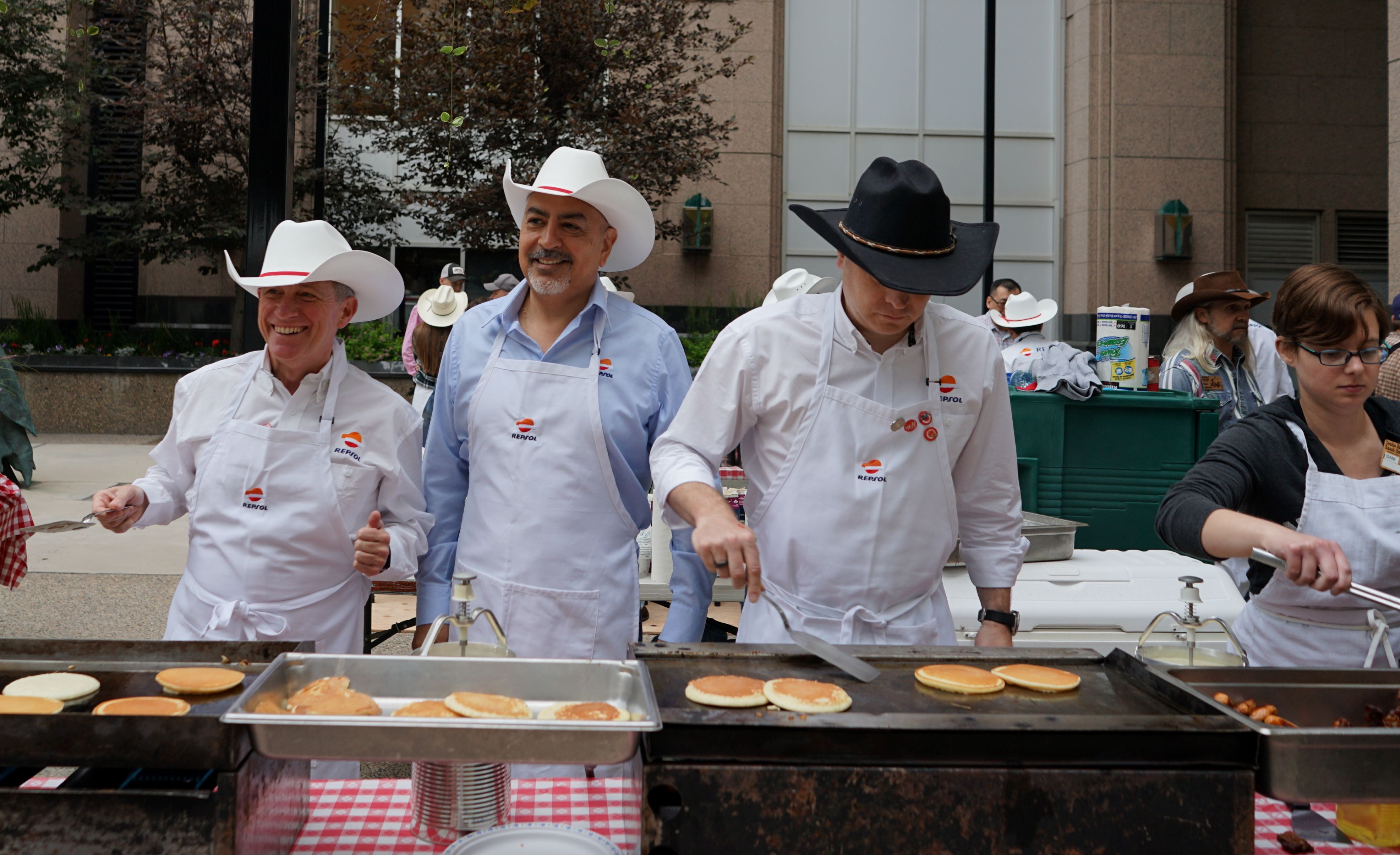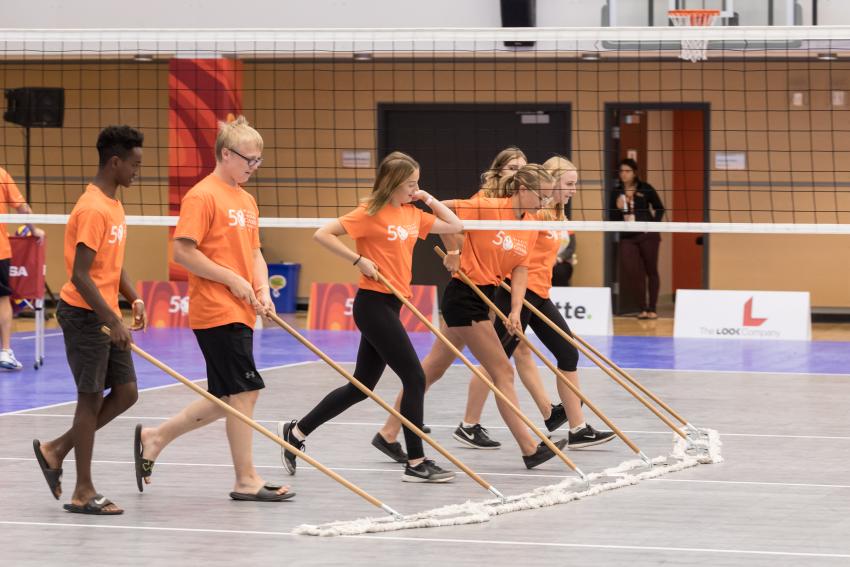Susan Phillips is answering Anna Maheu's questions.
Who is volunteering in Canada?
Susan D. Phillips: There isn't a typical profile, but we do have a broad idea of who is volunteering, what for, and for how long. We also know that overall, the rates of volunteering are declining and have been for a while1.
The number of volunteering hours of GenZs2 and Millenials3 is about half that of the Boomers4, leaving a substantial gap in volunteering5.
Fewer people give time, meaning that within that "pool of volunteers", a smaller group of people have to give many hours.
Let's be careful, as those trends vary among Canada. It's a big country, and some provinces, notably Quebec, have specific dynamics.
What are the main causes that mobilize volunteers?
There's differentiation by cohort and by life stage. You will volunteer differently whether your children do sports for example.
We also learned in the early 2000's that elderly women volunteer an incredible number of hours with other seniors, in care homes and friendly visits to the vulnerable members of their communities6. As they're aging out of the system, it's not clear who will be replacing them.
Volunteering is also very strong among the GenZs, actually more so than the cohort before them the Millenials.
Young adults have a stronger tendency to be activists. They are not afraid to speak up for causes that matter to them, joining social movements and grassroots organizations.
French GenZs also don't shy away from political engagement, but they do it in informal structures rather than nonprofits. Do you have a similar shift from formal volunteering to informal volunteering?
We couldn't know as we don't have good data on informal volunteering. The government surveys mainly track formal volunteering through organizations. But even within those charities, there seems to be a tendency for less formal volunteering. People aren't willing to commit to formal volunteering over long periods anymore. They will decline to be a board member or to show up for an entire weekend. That's particularly true for Boomers.
To be specific, we don't know enough about informal volunteering, but we have a particular blind spot on racial and ethnic communities' grassroots organizations. We know that Black, indigenous and racialized communities give and volunteer at rates that are at least equal to the general population7. But these contributions probably take a different route than formal organizations, such as informal helping or donations within the extended family and community.
In the summer of 2020, the Trudeau government awarded the contract for the Canada Student Service Grant (CSSG) to the WE Charity Foundation, which would have paid students up to 5,000 $ to "volunteer". Is mandatory or paid volunteering common in Canada?
We have experienced different types of mandatory volunteering for a long time. In many provinces, students have to do 40 hours of community service to graduate from high school. It finds its roots in the belief that if you introduce students early on to volunteering, they'll continue throughout their lifetime.
There's very mixed evidence for that being true. Those who were already inclined to volunteer have a more positive experience that likely carries beyond high school. Those who just do it to get through high school don't show any kind of lifelong effect8. So we already have mandatory volunteering, including high school graduation requirements, social assistance guidelines, community service learning initiatives, and alternative sentencing programs.
So the Canada Student Service Grant was not a surprise?
It was a surprise, and not a great idea either. Let's go back: during the pandemic, the federal government knew that post-secondary students were going to be hit hard. They wouldn't have summer jobs and would then struggle to pay their tuition. Also, they didn't qualify for the workplace COVID-19 subsidies. Simultaneously nonprofits and charities were hit hard by the pandemic and its aftermaths. Back then it was predicted that 1 in 5 charities and nonprofits may close as a result of the pandemic9.
So the Trudeau government's idea was to help students and nonprofits with a plan to pay students to ‘volunteer’ during the summer.
Volunteer Canada was against the idea. Not only this is not volunteering, but the government planned to do it at an unreachable scale, encouraged by the celebrity WE Charity. Imagine this: from mid-May to September, they would place 100,000 students in nonprofit organizations, many of which were working remotely, or had scaled back in advance of the summer. In the end, the program was canceled on June 25th, 2020 without ever placing a volunteer. The whole incident shows how poorly the government understands the nonprofit sector and its needs10.
What do we know about the organization in which volunteers get involved?
Most people would volunteer through charities for formal volunteering. It is important to note that charities and nonprofits are distinct categories on this side of the Atlantic. Charities are the roughly 86,000 organizations with a charitable purpose recognized under common law. They are registered by the Charities Directorate of the Canada Revenue Agency (CRA). A large number are faith-based organizations, but they are extremely diverse: registered charities include hospital foundations, universities, and colleges. Those organizations skew the numbers in terms of assets and employees.
Nonprofits are a lesser-known territory, mainly because they have minimal reporting requirements.
In Canadian legal terms, nonprofits are not-for-profit associations that are not charitable. Nonprofits are everything from small mutual help groups and book clubs to professional associations like the Canadian Medical Association.

How are resources distributed across the nonprofit sector?
It is a common mistake to grasp it on a sector level. To understand the resources Canadian charities share, you need to take out the hospitals and the other quasi-government organizations. Even without them, there's still a great discrepancy where nearly half of charities reported that they had no paid staff in 2017, and just over a third reported fewer than 10 staff members11.
Then there's a small group of charities with large staff and budgets. Those organizations tend to be more in health care groups, to raise money from others like United Way Canada, or to be federated organizations like the Young Men's Christian Associations (YMCA). That great discrepancy has only grown wider in the aftermath of COVID. Almost 70 percent of Canadian charities experienced a reduction in revenues during COVID-19, on average about a 30 percent decline12. And the impact on finances hit the smaller organizations the hardest.
4 years later, they are still trying to recover.
Just like volunteering, philanthropy is in decline and concentrating in a few hands. The rate and participation of giving donors and the amount and frequency with which they give are declining. However, the overall amount of philanthropy has stayed the same thanks to important donations made for health care and conservation. Those large donations go from big donors to big charities.
On the other end, smaller organizations are struggling more than they've ever been. Struggling to find volunteers, donations, even earned income, either entrepreneurial activities or government contracts. With around one in five charities noting an increased demand for services in both 2023 and 2024, the sector is facing a dual challenge of stretching its already strained resources to meet growing needs. Demand has risen enormously in the last couple of years, particularly in food security and mental health.
What do we know about the nonprofit workforce in terms of age, gender, and ethnicity?
The entire sector amounts to one in 10 full-time jobs13, thanks to the quasi-government organizations I was talking about earlier. Millennials now comprise 50% of the labor market, and almost 30% are already in management positions14. The sector is highly educated, and its employees are more likely to have a university degree than the private sector on average.
75 percent of the charities' workers are women, particularly in community and long-term care15.
Those particular positions are often for immigrant and newcomer women as an entry point. In Toronto, 48% of women workers in the nonprofit sector are from immigrant populations16. Precarious and underpaid care work is not distinctive to Canada. We are experiencing a real change within the sector to build a decent work agenda, with pension plans, actual benefits, and less precarious contracts.
Going back to the early 1800s, the French philosopher and diplomat Alexis Tocqueville gave two very different reports while visiting successively the United States and Canada. The US was a nation of "joiners", where civil-society associations ensured democracy17. Canada was described by the strength of the state over civic institutions. Do you think this parallel is still relevant nowadays?
First, Tocqueville only went to Lower Canada, what is now Quebec. He didn't spend long there, probably a week or so, and he reported that he saw a strong state, but no associations. Anyway, Canada, like the US, evolved into a liberal welfare state. That's been long-standing.
We should look at it backward: Tocqueville's account gave the US this animating narrative that they are a nation of joiners. We never had such a founding myth in Canada. One of the many consequences is that the sector is much less observed than the US nonprofit sector, including as an area of research.
You've been studying the Canadian voluntary and nonprofit sector for more than two decades now. What main evolutions did you notice?
Demographics drive the main evolutions. We're now facing a major leadership shift in the sector. Many volunteer leaders, board members, and executive directors stayed even though they were at retirement age. They are now leaving in significant numbers18. A real leadership transition should be happening, but the nonprofit sector has not developed its talent pipeline over the years. Also, successions are not well-thought-out within organizations. So now there's an enormous churn in organizations and lots of positions are not filled.
Let's not be pessimistic: it's an exciting time.
I am surrounded by people who want to make a change, and for whom the nonprofit sector is the perfect vehicle for that. I am certain the graduates of our Master's program at Carleton University are going on to bring real change across the sector.
Finally, the sector is still trying to figure out the digital transition and its implications on how we deliver services, engage with our volunteers and donors, etc. It's a transition point where all of those big forces meet: rising demand, demographic shift, technological transition, and new forms of volunteering.
What could be done to make the transition smoother?
We need to be better at training and upskilling the workforce. It is as simple as being able to be an employer of choice, by paying decent wages and investing in infrastructures. To do that, we need donors to accept the idea of overhead. Overhead is staff, it's technology, it's training. We're starting to see some change among foundations that are slowly accepting to invest in infrastructure, something they have been historically reluctant. It is starting to change, but not quickly enough.
- 1Allison Russell (University of Pennsylvania), Paula Speevak (Volunteer Canada), and Femida Handy (University of Pennsylvania), "Chapter 20 - Volunteering: Global Trends in a Canadian Context", In Susan D. Phillips and Bob Wyatt (Eds.), Intersections and Innovations, 2021, [online].
- 2Generation Z, or Gen Z, refers to the group of people who were born between the late 1990s and the early 2010s.
- 3Millenials are a group of people who were born between around 1981 and 1996
- 4A Boomer is a person born during the period between approximately 1945 and 1965 following the Second World War.
- 5Susan D. Phillips, "Five Trends in 2023", Philanthropy and nonprofit leadership (PANL) Perspectives, January 30, 2023, [online].
- 6Susan D. Phillips, Laura Goodine and Brian Little (Carleton University), "Caregiving volunteers: a coming crisis", Volunteer Canada, 2002.
- 7Krishan Mehta (Seneca College and University of Toronto) and Patrick Johnson (Borealis Advisors), "Diaspora philanthropy and civic engagement in Canada: Setting the stage", The Philanthropist, n°24, [online].
- 8Allison Russell (University of Pennsylvania), Paula Speevak (Volunteer Canada), and Femida Handy (University of Pennsylvania), "Chapter 20 - Volunteering: Global Trends in a Canadian Context", In Susan D. Phillips and Bob Wyatt (Eds.), Intersections and Innovations, 2021, [online].
- 9Mary Giles, "Changing Times for Charities in Canada - Susan Phillips, Philanthropy and Nonprofit Leadership", Another Take, Faculty of Public Affairs – Carleton University, June 23rd, 2021, [online].
- 10Susan D. Phillips (Carleton University) "WE scandal an opportunity to update policy for charities," The Toronto Star, September 1st, 2020, [online].
- 11David Lasby and Cathy Barr (Imagine Canada), "Chapter 2 - State of the Sector and Public Opinion about the Sector", In Susan D. Phillips and Bob Wyatt (Eds.), Intersections and Innovations, 2021, [online].
- 12Mary Giles, "Changing Times for Charities in Canada - Susan Phillips, Philanthropy and Nonprofit Leadership", Another Take, Faculty of Public Affairs – Carleton University, June 23rd, 2021, [online].
- 13CanadaHelps, The giving report 2018, 2018, [online].
- 14Jim Link (Randstad North America), "Engaging the workforce of the future: The emergence of Generation Z", Human Resources Professionals Association (HRPA) 2018 Conference, 2018.
- 15Susan D. Phillips (Carleton University) and Bob Wyatt (Muttart Foundation), "Chapter 1- Intersections and Innovations: Change in Canada's Voluntary and Nonprofit Sector", Intersections and Innovations, 2021, [online].
- 16Tom Zizys (Ontario Nonprofit network), Not working for profit: a labor market description of the non-profit sector in Toronto, 2011, [online].
- 17Alexis de Tocqueville, Democracy in America, 1838.
- 18Susan D. Phillips (Carleton University) and Bob Wyatt (Muttart Foundation), "Chapter 1- Intersections and Innovations: Change in Canada's Voluntary and Nonprofit Sector", Intersections and Innovations, 2021, [online].


